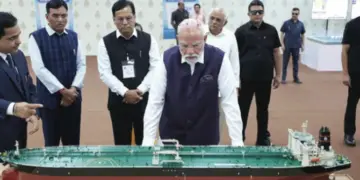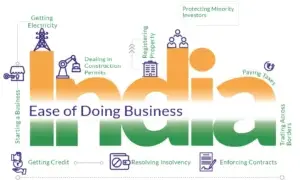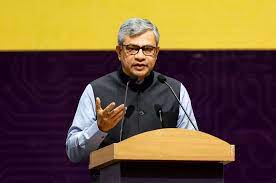By: Imtiyaz Hussain
In countries where the government promises competitive salaries to its officers, one would assume that corruption should diminish. Yet, despite earning handsome salaries, some officers continue to accept bribes and demand favours from clients who are either underprivileged or have illegal cases to put up. This paradox raises critical questions about the factors driving such behaviour and the system that allows it to persist. Recent High profile bribery cases only highlight deep-rooted issues that contribute to this ongoing problem.
Greed & Materialism – The unending Thirst for wealth.
A high salary, sufficient to meet most needs often does not satiate the ever growing desire for more wealth. For some officers, the lure and luxury, power & status can override ethical considerations. Society often measures success in terms of Society material wealth, leading individuals to seek additional, often illicit, sources of income to fund a lavish lifestyle. This greed is exacerbated by the societal pressures to display wealth, which can sometimes outweigh the fear of legal repercussions.
Case Reference:
Take, for instance, the case of M.Natarajan, who was involved in a bribery case despite his powerful connections & influence. His involvement in corruption highlighted how even those with Substantial resources are often driven by the desire for more, reflecting on the pervasive nature of greed.
Corruption as a systematic issue – The Power of the Environment.
Corruption often thrives in environments where it has become a norm rather than an exception. Officers entering such systems may find themselves coerced into participating in corrupt activities simply because it is expected of them. The institutionalization of corruption creates a vicious cycle where even those with good intentions can be drawn into unethical practices. The fear of isolation or retribution within such an environment can further push officers toward accepting bribes.
Case Reference:
The Vyapam Scam in M.P. is a prime example. This massive scandal involved officials, politicians & Businessmen is an intricate web of corruption within the Education & Employment sectors.
Inadequate Deterrents & Enforcement- The Perception of Impunity.
One of the most significant factors contributing to corruption is the perception that there are minimal consequences for such actions. When the enforcement of anti-corruption laws is weak or when penalties are either too lenient or inconsistently applied, officers may feel emboldened to accept bribes. This sense of impunity is further strengthened when high profile individuals involved in corruptions manage to evade Justice.
Case Reference:
The Telgi stamp Paper scam, where Abdul Karim Telgi masterminded a multi-crore fake Stamp paper racket. Telgi’s ability to bribe officials to turn a blind eye to his activities showcases the deep-seated issues within the enforcement framework.
Lifestyle İnflation & Financial Pressure-living beyond means.
A substantial Salary often comes with increased expectations, both from society & from oneself. This phenomenon, known as life- -style Inflation, can lead to financial pressure that go beyond what officer’s legitimate income can cover- whether it is maintaining a certain social status, funding private education for children or investing in real estate.
Case Reference:
The Satyam Scandal provides insight into how financial pressure can lead even the wealthy to commit fraud.
The impact on Society – The Erosion of trust & the cost of corruption.
Corruption among high ranking officers erodes public trust in govt. institutions and the rule of law. It perpetuates inequality and poor and honest are left behind.
Case Reference: The commonwealth Games Scam serves as a stark reminder of the societal costs of corruption. Widespread bribery & financial mismanagement in the preparation for the 2010 games not only resulted in significant financial loses but also damaged India’s international reputation.
Conclusion:
The reasons why officer might accept bribes despite earning a salary of 1 lakh are complex and Multifaceted, Greed Systematic corruption, week enforcement,
Financial pressures & political influences all play significant roles in perpetuating this issue
Some of the Solutions & Remedies to Combat corruption. While understanding the reasons behind corruption is crucial. it is equally important to propose actionable remedies to address this pervasive issue. The following measure could significantly reduce the incidence of bribery among officers, even those with high Salaries.
1) Strengthen Legal Frameworks & Enforcement.
- a) Increase Penalties:
The legal Penalties for accepting bribes should be significantly increased to serve as a stronger deterrent. this include not just imprisonment but also severe financial penalties, confiscation of assets & long term disqualification from holding public offence.
- b) Swift Justice:
Corruption cases should be fast tracked in courts, ensuring that those caught are prosecuted & punished without undue delays. To establishment of special anti corruption courts could help in this regard.
2) Institutional Reforms
- a) Transparent Processes:
Government procedure, particularly those involving public procurement licensing & regulatory approvals, should be more “transparent & automated to reduce the Opportunities for bribery. Implementing e-governance & digital platforms can minimize face to face interactions, thereby reducing the scope for corruption.
b). Strengthening Anti-Corruption Agencies:
Agencies like the central vigilance commission (CVC) & the Lokpal should be given more autonomy and resources to investigate & act corrupt practices. Regular audits & independent oversight of these bodies can ensure their effectiveness.
3) Promote Ethical Training & Awareness:
a). Ethical Education:
Officers should undergo regular training in ethics & integrity, emphasizing the importance of public service and the long term harm caused by corruption. Such training should be an ongoing process throughout their careers, not just a one time.
- b) Whistleblower Protection: Encouraging a culture of transparency by protecting and rewarding whistleblowers who report corrupt practices can be a using the safely powerful tool against corruption. Ensuring the safety and anonymity of whistleblower’s is crucial to fostering environment where corruption can be exposed without fear of retribution.
4) Political and Bureaucratic will:
- a) Zero-Tolerance Policy:
The government & senior bureaucracy must demonstrate a zero-tolerance approach to corruption. This includes leading by example & ensuring that no one regardless of their position is above the law.
- b) Decentralization & Empowerment: Decentralizing power and giving more authority to local bodies can reduce the concentration of power that often leads, to corruption. Empowering local communities to oversee projects & funds can create a more accountable governance structure.
5). Public Engagement & media vigilance
- a) Civil Society Involvement: Civil society organizations and the media should be encouraged to play an active role in exposing corruption. Public awareness campaigns can educate citizens about their rights and the importance of refusing to participate in corrupt practices.
- b) Encouraging Public Participation:
Citizen feedback mechanisms, like grievance redressal portals & public hearings, should be strengthened to allow people to voice their concerns & report corruptions effectively.
By implementing these measures, we can begin to address the root cause of corruption and create an environment where integrity is valued above all. It is only through collective efforts – combining robust legal frame works, institutional reforms, ethical training, & public vigilance that we can hope eliminate the scourge of corruption from Society.
The writer has a Master’s in Public Administration. aahilimtiyaz595@gmail.com.






